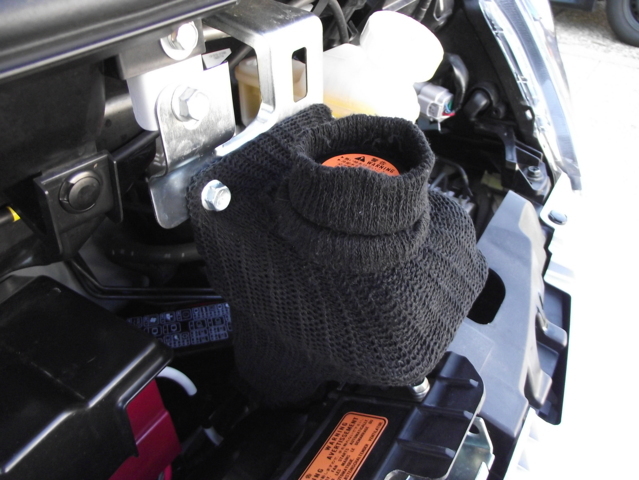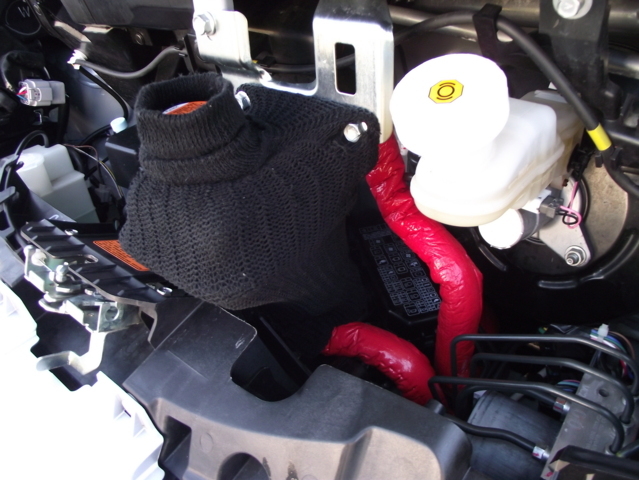DonDakin said:Hey lowracer,
That looks like a really good Idea. Thanks for taking the time to post the pictures.
I have a couple of questions about your mod:
Do you have any information about how much it saves in energy or how much hotter the air is coming out of the vents. It looks like the temp is about 84 deg C what was it before the mod ? What was the outside temp when you did this ? Was the car moving in cold air or stopped ?
Looks like a great idea I'm sure it helps. I wonder why they didn't do this at the factory it just makes sense.
Don......
Thanks don!
Of course I've tested it before the insulation mod.
I've lifted the car and removed the plastic cover( fixed with 8pcs M6 bolts and 3 clips).
Then I turned the heater button to the maximum and "PUSH MAX" too.
Ouside temp is 12C°, after 27seconds I've measured a temperature of 63C° with an IR-Thermometer on the bottom of the aluminum PTC-heater element! :roll:
OK, the heater has got a nominal power of 5000Watts....
But this heater plans don't work out, because many KiloWatts are blown away!!!
The PTC-heater has got around 3cm free space, that's a not disired air blast cooling.
With the 25mm Armaflex(150C° cellfoam) the generated heat stay into the PTC-Heater, the loss is minimized! I was so impressed that I decided me to insulate the hoses to the pump, reservoir and the way back.
Maybe the insulation was Mitsubishi to expensive!
Here my experience over 2weeks in the night(outside temp 11-13C°):
Before the insulation mod, I turned the heater to maximum, the heat was coming very slowly.
The shown possible range went back all minute...
After the insulation mod, I don't need to turn the heater to the maximum, because the air is so hot that you can burn your fingers in front of the grid. The button position "halfway through" is realistic here. The shown possible range go back to 15-25Km! :mrgreen:
The i-MiEV has got 2 different liquide circulations, but you cannot combine both with another!
The first, so cold as possible(<35C°):
Reservoir in the back-> pump-> charger-> controller-> motor-> cooler in the front->
The second, so hot as possible(>80C°):
Reservoir in the front-> pump-> heater element-> heater battery(inside)->











